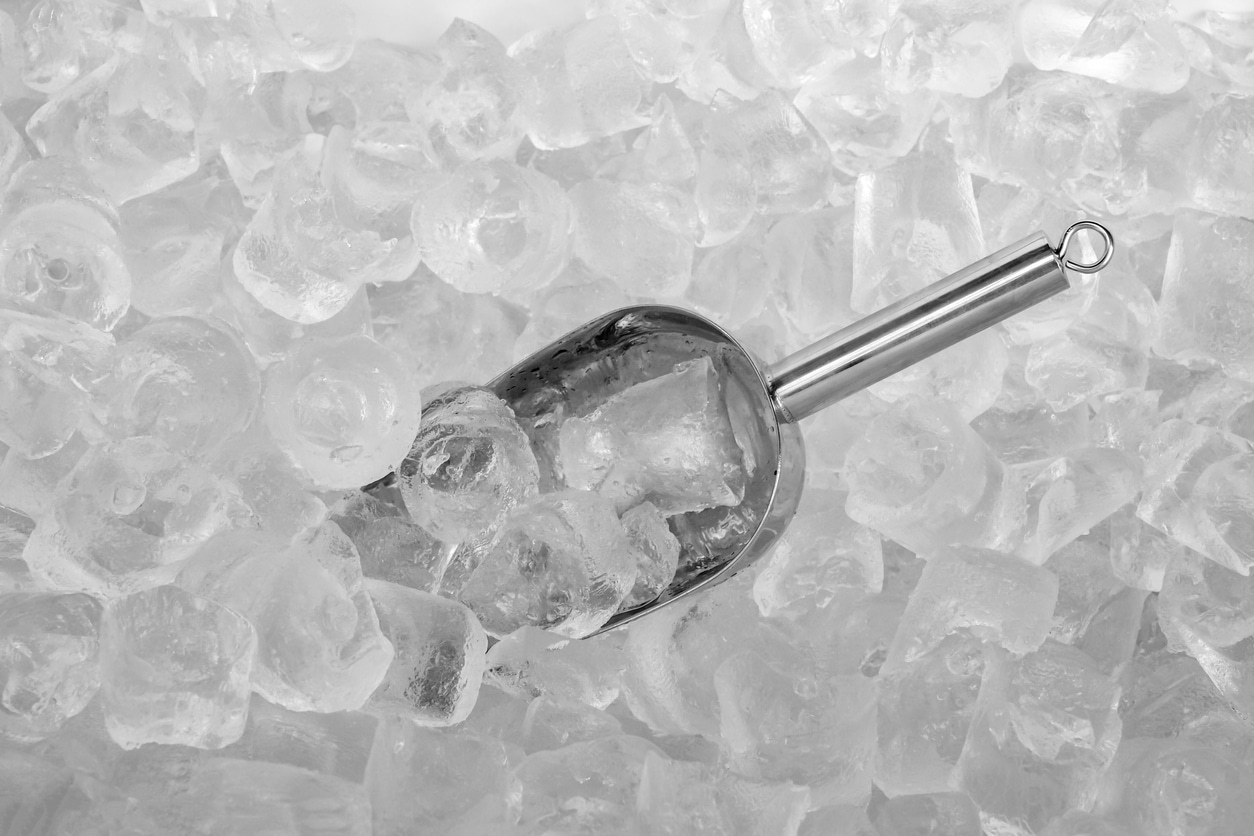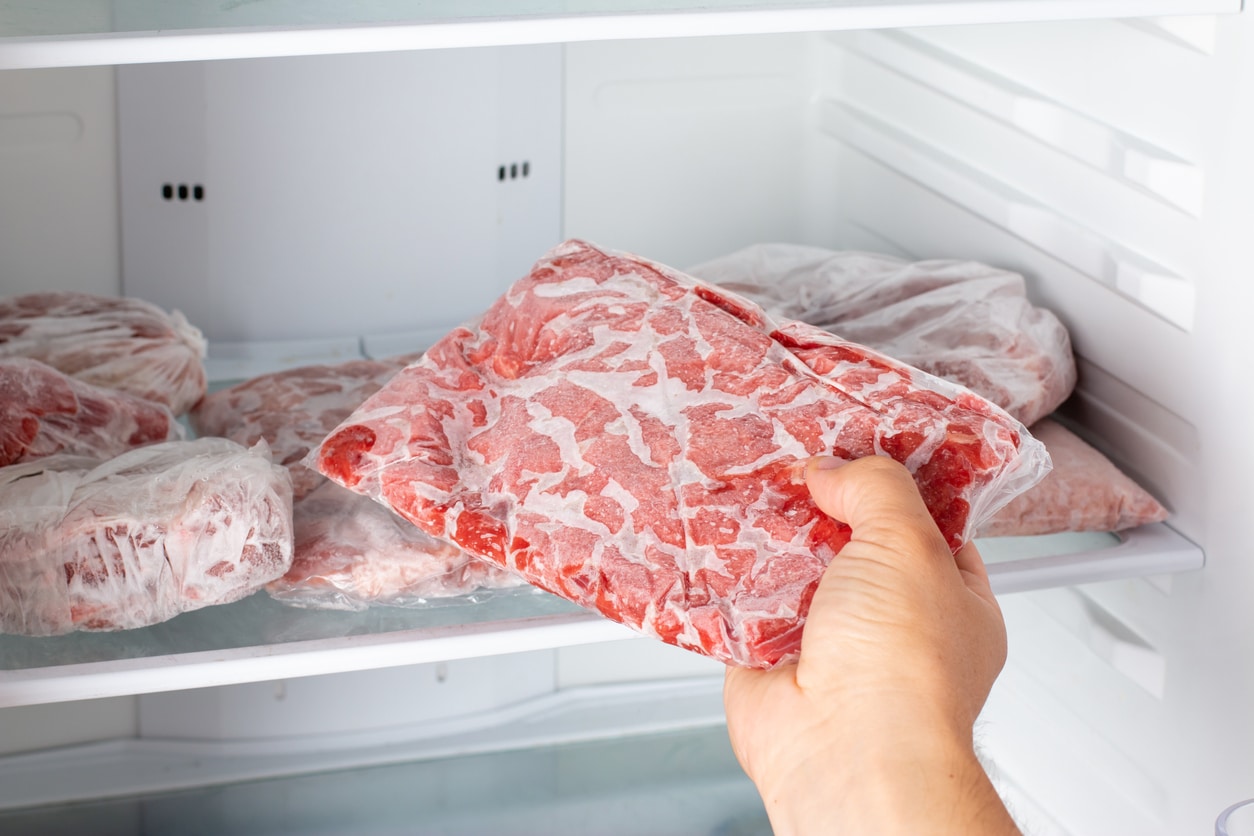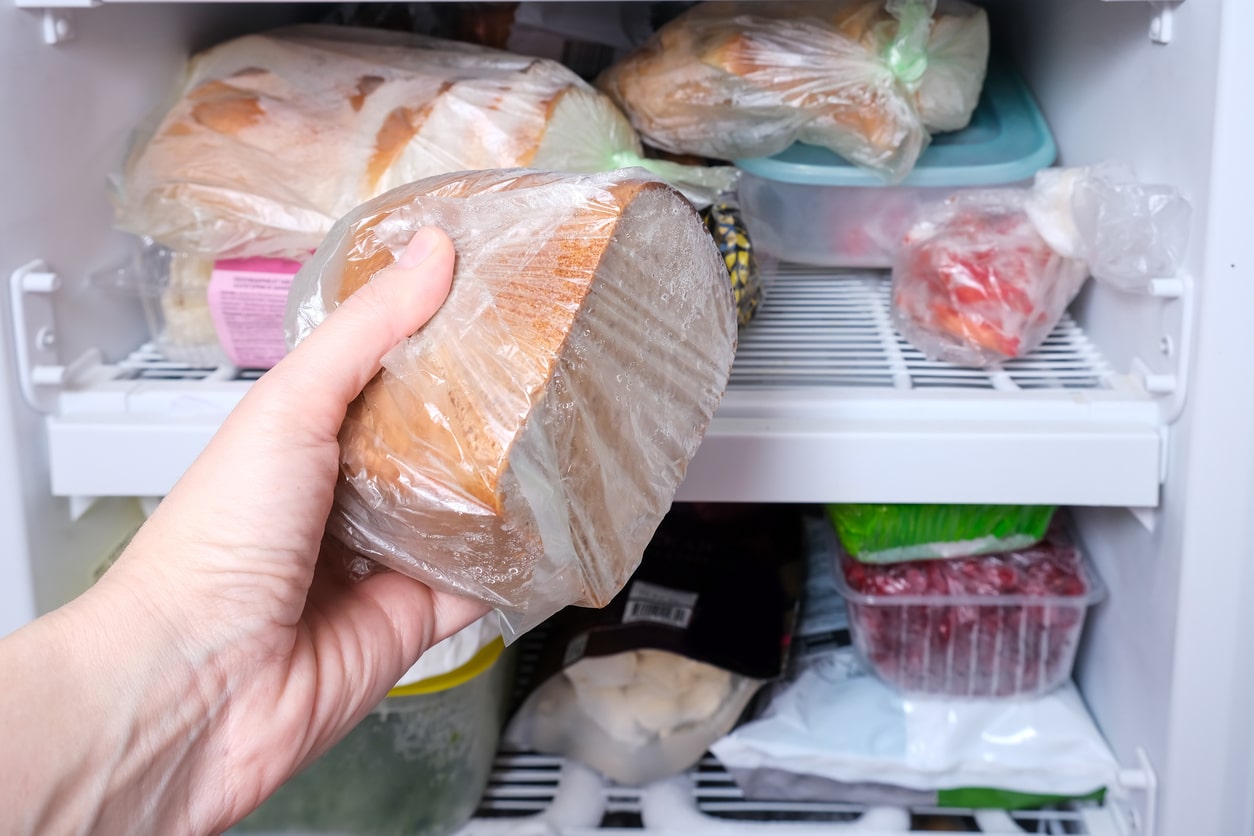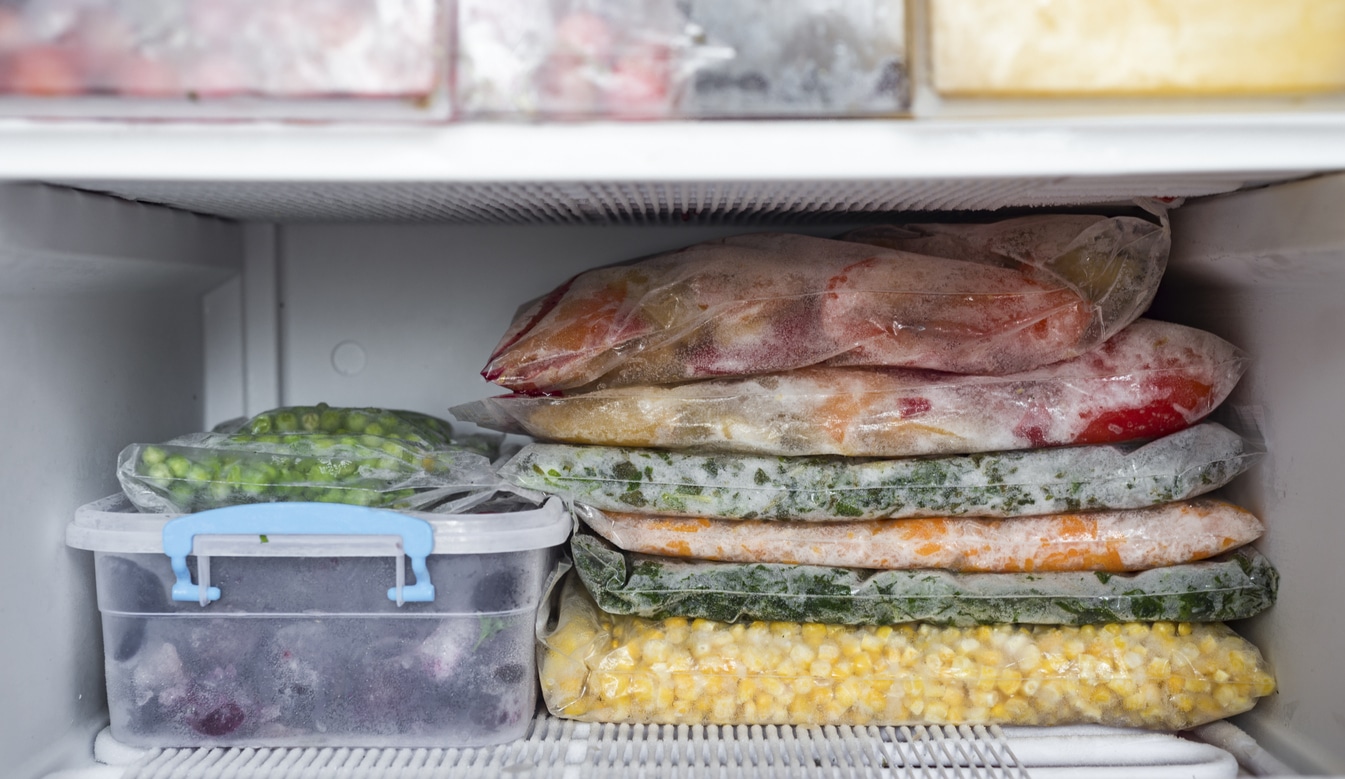Is your freezer full to bursting and you can’t fit anything in it? For the sake of your provisions, your meal prepping efforts and your favorite ice cream freshly cooked by you, you have to sort carefully, but where do you start? Between forgotten bags of frozen vegetables, meat disappeared under a layer of ice, leftovers from Christmas 2020 and unlabeled boxes whose contents remain a mystery, it can be difficult to know what to keep and what to throw away, especially since We don’t want to waste food given the prices of food! To help you rid your freezer of excess without regret and make space, follow our useful little guide. You will discover the foods that you can throw away without hesitation to save time in the freezer!
Also take advantage of this sorting to defrost the device and thus make significant energy savings.
1) Ice cubes that smell bad

Inside the fridge-freezer, food can lose its odors. When simple water ice cubes start to smell like garlic, it’s best to get rid of them. In fact, these ice cubes which have absorbed the surrounding odors risk not taste good and ruin your iced coffee or cocktail. If this happens again, consider investing in ice cube trays with lid. Freshness and odorless ice cubes guaranteed!
2) Frozen meals left in the freezer for too long
For difficult evenings when we don’t have time to cook, it’s nice to be able to choose a dish that we want in the freezer to reheat for a few minutes in the microwave. It couldn’t be more clever and practical! However, if you freeze too much, you end up not necessarily consuming everything. However, frozen prepared meals are to eat within three months. Yes! even if the freezer offers a long shelf life, the food still has an expiration date…
3) Misidentified leftovers in the freezer
Leftovers usually keep between two and six months. If you no longer know how long they have been inside or even if you can no longer guess the contents of the freezer bag or plastic box, it is better to avoid unpleasant surprises. It’s not worth making yourself sick…
4) Thawed meat

Power outage, poorly insulated freezer, malfunction… If we are not sure that the food is well protected, it can develop pathogenic bacteria. This is particularly the case with meats which can quickly find themselves covered in dangerous germs. And even with good, hot cooking, food poisoning is guaranteed!
5) Freeze Burned Vegetables and Meat
Freezer burn is a common problem in this cool space. The bag of salad and the pans can then look more like piles of ice cream than ready-to-use vegetables. If they have more than about three monthsbetter to play it safe! The same goes for meat which, once burned by the cold, becomes dry, tasteless and as inedible as sole. If it has been in the freezer for a while and the ice crystals have colonized them, there is no point in keeping them any longer… For cold cuts, do not exceed two months and be sure to keep it well packaged.
6) Old ice cream
For those with a sweet tooth, it’s hard to imagine a tub of ice cream left unfinished and forgotten at the bottom of the freezer! However, if you’re not a big consumer and once summer passes you forget that your frozen treat collection even exists, it might be time to take a look. Indeed, after three to four monthsthe quality of your frozen sweet snack begins to sharply decline. Opt for smaller individual portions and smaller containers.
7) Old bread languishing in the freezer

When you don’t eat a whole baguette, freezing fresh bread avoids wasting the fruit of your dear baker’s labor! This prevents it from becoming stale and all you have to do is moisten it a little and put it in the oven to restore its crispiness. Be careful, however, because after six months in the fridgeits good taste and texture will change greatly. To avoid deterioration linked to cold, do not exceed this shelf life!
The added tip: freeze the bread in slices or pieces so that you can defrost only what you need.
8) Coffee and cream pastries
You can definitely keep your coffee beans in the freezer to preserve their freshness. However, they absorb a lot of moisture and end up drying outeven with good packaging. To maintain their intensity and flavor, so consume them within three months. For pastries with cream or cheese, however, do not exceed one month.
How to avoid waste with your freezer?

To avoid having to throw away food stored in the freezer, adopt a few simple and preventative practices. By adopting these habits, you will maximize the life of your food stock in the long term.
-First, practice inventory rotation. To do this, place new items in the back of the freezer and use old frozen foods first to prevent them from reaching their shelf-life date. This is what we call the “first come, first consumed” rule !
-Then adopt a clear labeling. All containers must be labeled with the freezing date and contents. This will allow you to easily track food freshness and take the guesswork out of it.
-If you have a chest freezer, categorize foods (meats, vegetables, prepared meals, etc.) and use bins or baskets to maintain order. This makes it easier to find specific items without disrupting the rest of the freezer.
-Furthermore, freeze food in portions suitable for your usual consumption. This reduces waste by allowing only the quantity needed to be defrosted. For example, freeze tomato sauce in an ice cube tray so you can use just a few cubes as needed.
-Finally, perform regular defrosts to remove ice buildupwhich can affect the quality of food. Also clean shelves and drawers periodically to prevent unwanted odors. Also make sure that the freezer temperature is constantly below -18°C to guarantee optimal conservation. A freezer thermometer can be helpful in monitoring this temperature, but you can also freeze a glass of water topped with a coin. If the coin is at the bottom of the glass, there has been a power outage and the food is probably no longer frozen. Put them in the fridge and eat them quickly!


